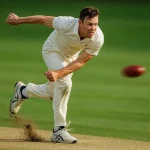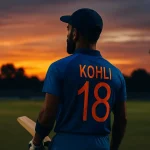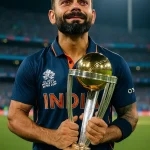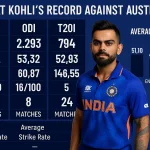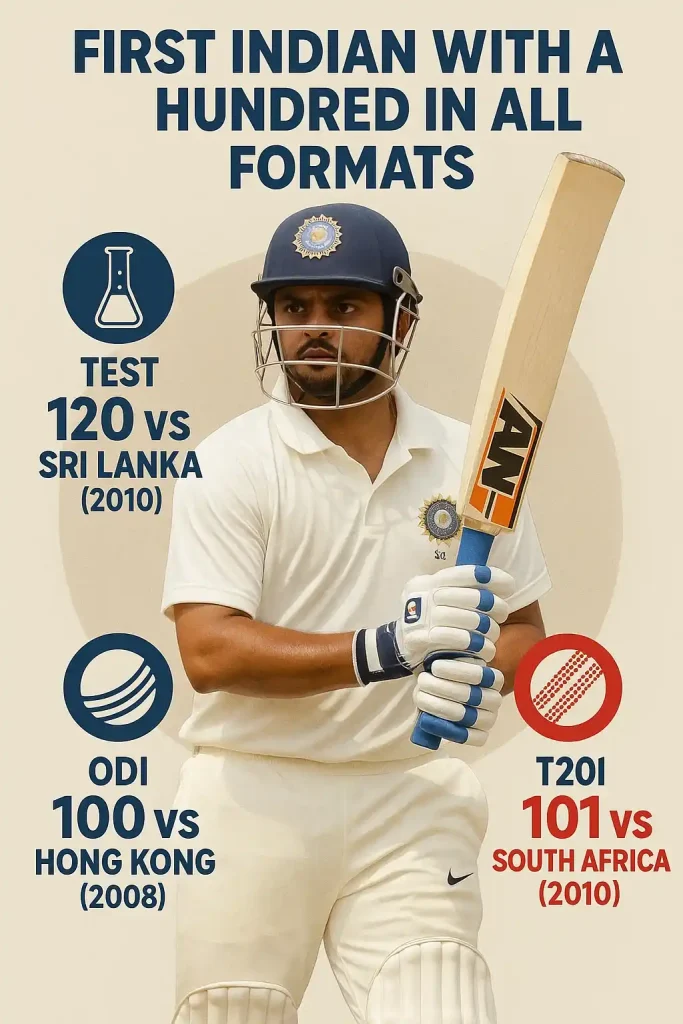
The idea of ‘the first century’ changes depending on where you point your lens. Test cricket? Limited overs? Across all international formats? There are different names etched in history, and each one earned their place not just with the bat, but with context. And for a country like India, where cricket is stitched into daily conversation, those names echo far beyond the scorecard.
Test Cricket: Lala Amarnath, the Pinto Pioneer
Let’s start at the top. India’s first test century was scored in 1933. This was the time of British rule in India, and the idea of an Indian cricketing nation was still in its infancy. It is a family named Amarnath who, for better or worse, will go down in history. Playing England, Amarnath scored 118 at the Bombay Gymkhana, which was more than a simple hundred; it was a statement of sorts. It was an assertion that India was not simply going to participate on the world stage, but actually compete.
Those innings were daunting and also dominated by emotion. Additionally, it was technically solid. For Amarnath, who was moody, orthodox batting was a preferred method to express himself. The innings against the British Empire carried far more significance than just the number on the scoreboard. That century provided a mental edge. Although India had lost that test, it had, for the first time, sought out the Indian team oasis, not just the team with its dreams.
ODIs and the 70s Revolution: Kapil Dev Breaks Through
Fast forward to the One Day International format. Cricket in the ‘70s was beginning to change — coloured clothing, white balls, day-night matches. And India, known more for its spinners and temperament, hadn’t quite found its groove in the shorter game. That changed when Kapil Dev walked out to bat against Zimbabwe in the 1983 World Cup.
It was chaos. India was 17 for 5. And Kapil? He unleashed fury. 175 not out — the first century in a World Cup by an Indian, and for many fans, the most unforgettable ODI knock of all time. It wasn’t technically the first ODI century by an Indian — that honour goes to Dilip Vengsarkar in 1985. But Kapil’s innings carried so much narrative weight that, in the cultural memory of Indian cricket, it often overshadows all else.
T20Is and the Modern Machine: Suresh Raina Leads the Way
Now to the youngest and most volatile format: T20 Internationals. Who broke that wall? It wasn’t Tendulkar. Nor Dhoni. It was Suresh Raina.
In 2010, during the T20 World Cup against South Africa, Raina scored 101 — becoming the first Indian to hit a century in T20Is. It was clean, fast, and unrelenting. He used the pace, cleared the field with confidence, and showed the cricketing world that India could dominate in this new era. That knock made him the first Indian to have centuries in all three formats — an underappreciated landmark.
Table 1: First Century in Cricket by an Indian — Format Breakdown
| Format | Player | Runs Scored | Opponent | Year |
| Test | Lala Amarnath | 118 | England | 1933 |
| ODI | Dilip Vengsarkar | 105* | New Zealand | 1985 |
| T20I | Suresh Raina | 101 | South Africa | 2010 |
The First Century in All Formats: Raina’s Understated Legacy
We often talk about Kohli, Rohit, and Gill when discussing dominance across formats. But Suresh Raina — who was never quite the golden boy — quietly achieved something historic. By 2010, he had a Test ton, an ODI hundred, and a T20I century. In doing so, he became the first Indian to score 100 in all international cricket formats. That phrase — “first century in cricket by an Indian in all formats” — belongs to him.
Why does that matter? Because versatility isn’t just about skill. It’s about adapting to different rhythms. Tests are chess. ODIs are marathons. T20s? Street fights. To succeed across all three requires not just talent but temperament.
Table 2: Indians with Centuries Across All Formats (As of 2025)
| Player | Test 100s | ODI 100s | T20I 100s | Year of Completion |
| Suresh Raina | 1 | 5 | 1 | 2010 |
| Rohit Sharma | 10 | 30 | 5 | 2018 |
| KL Rahul | 7 | 7 | 2 | 2021 |
| Virat Kohli | 29 | 50 | 1 | 2022 |
Raina may not have the stats of Kohli or the flair of Rohit, but his firsts still matter. They opened the door.
Why Firsts Still Matter in a Sport Obsessed with Accumulation
In today’s data-flooded cricket discourse, milestones often blur into one another. But firsts — they stick. Because firsts don’t just measure performance. They measure change. Lala’s ton? It changed India’s belief. Raina’s? It changed how we viewed adaptability.
And perhaps that’s the point. The first century in cricket by an Indian isn’t just a stat. It’s a mirror. Of where we were. Of what it took. Of how far we’ve come.
So next time you hear the phrase, don’t just ask “who?” Ask “why did it matter?” Because cricket, like memory, is richer when you read between the lines.

Meet Arjun Kushaan, a passionate cricket analyst at The Cricket24x7. From street matches in his childhood to competitive college tournaments, cricket has always been a central part of Arjun’s life. With a strong background in data analysis and a natural affinity for numbers, he brings a fresh, analytical lens to the game. At The Cricket24x7, Arjun blends his deep love for cricket with his data-driven approach to deliver detailed insights and well-rounded coverage for fans of the sport.

